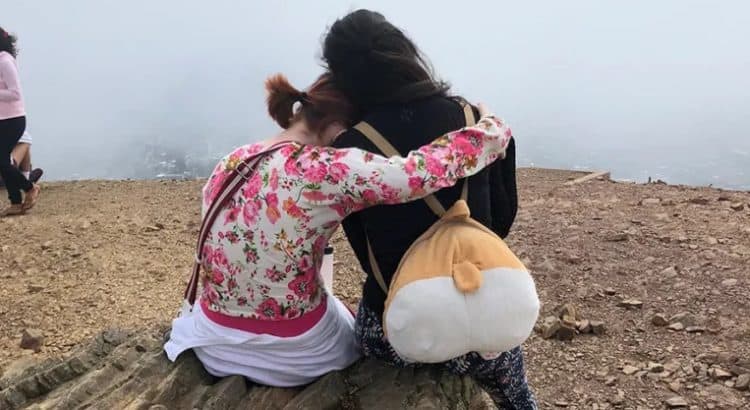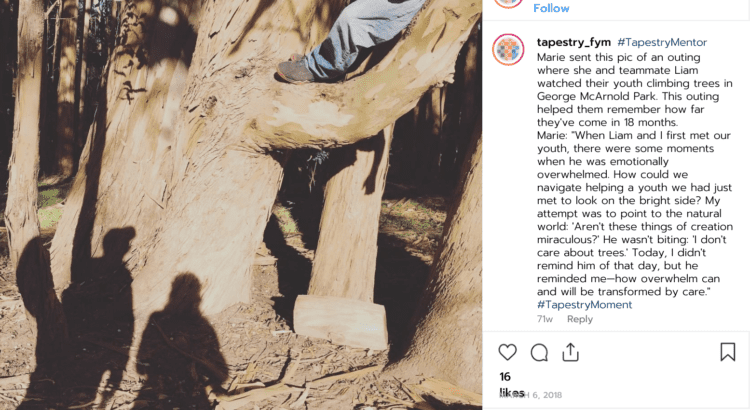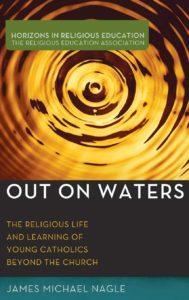Time to say a word about the final bonus episode of Becoming Tapestry!
In Chapter 4, I finished laying out the basic methodological approach to my project. In short, I employed a form of narrative analysis to outline the documentary as a whole.
The unit of analysis in this approach is what various theorists call moments or turning points or story plots. There are countless ways to represent a given experience. But in a big picture sense, what makes each one distinctive is the particular path the storyteller selects through a chosen set of moments and their meanings.
This is a constructive approach. I looked at all the data available and asked “What might I need to put in, in order to build the story I’m trying to tell?” At the project level, there wasn’t a viable alternative to such an approach. With hundreds of pages of field notes and recording transcriptions representing dozens of hours of on-site and online participation, I was only ever going to be able to include a very small percentage of the “data” in the overall account.
So I had to start with “nothing” and decide what I would consider adding.
Thus, I reviewed the data and coded for possible inclusion according to the many changes that took place during the project. This process led to a list of excerpts that includes but is not limited to the following:
- This moment (Ch 1, Act 2) captures how I came to understand Tapestry as meaningfully faith-adjacent.
- This moment (Ch 2, Coda) shows how the Tapestry co-directors have structured the organization as a network of relationships for dispersing the effects of trauma.
- This moment (Ch 3, Cold Open) represents the baked-in mismatch between Digital Storytelling as it is usually practiced and the week-to-week habits of Tapestry teams.
- This series of moments (Ch 4, Act 2) sketch out the important exchanges in the team’s conversations about the death of mentor Peg.
However, in the more micro or local sense, there is another form of analytic activity, one that is subtractive rather than additive. To tell a longer narrative in a way people might actually choose to engage with, you have to remove as much as you can.
Probably at least half of the intellectual labor that went into taking each chapter’s script from a shitty first draft to a polished recorded episode was whittling them down. I had to cut out a lot of my scripted voiceover and even more of my audio excerpts.
Few of us speak very efficiently when we’re exploring ideas we’ve never articulated, and so the moments that are most revealing in my conversations with participants were also the moments that needed the most trimming.
The additive/constructive (coding) step created a relevant dataset of a more manageable volume than the full set of “raw” data. But the subtractive (editing) step helped get to the core of the ideas and meanings contained in the data.
I’ve got two metaphors for what the process is like, one slightly more conceptual but also clunky and imprecise, one further removed from the world of ideas but much more evocative.
Metaphor 1: Theologians have a term called the via negativa. You explore what God is like by clearly delineating what God is not like. I like this metaphor for editing because of its starkness. It’s hard to make cuts, because we get attached to work that we’ve done or moments we were a part of. So embracing the idea of addition by subtraction, of saying something by deciding not to say something, can make letting go a little easier.
However, this metaphor is misleading in an important way. The via negativa emerges from an acknowledgement that there are limits to what we can say about God because God is in some sense transcendent and not fully knowable.
Now, perhaps we need that perspective in the social sciences too—people are also a glorious mystery. But this ineffability phenomenon is not what usually leads to a “cut” in the the connected worlds of media production and research reporting. Unlike in the via negativa, what gets cut isn’t usually “wrong” (“We must not say that God is _____”), it just isn’t the strongest or most relevant articulation of whatever we’re exploring.
Metaphor 2: More helpful to me is the visual/material “idea” Michelangelo explores in his Prisoners sculptures. The sculptor saw or found, in his blocks of marble, human forms trying to free themselves. His task was to remove some of the raw material so that the forms that were “already present” (in some combination of his imagination and the actual structure of the stone itself) could be exposed.
Now, this little essay would be an awful lot to say about the process of removing a few words, a few beats of silence, or an entire clip from the audio timeline in Adobe Premiere (or the rough equivalent in the text-based analogs). Even I’m not that much of a process nerd.
All this has been worth saying because the final bonus episode of Becoming Tapestry becomes a piece of audio made by a kind of the sonic equivalent of the sculpture process. In this case, an entire 45-minute interview was the “fresh block of marble” from which I cut away until what was left was an 8-minute distillation of former Tapestry mentor Yesenia’s story.
No coding. No connective narration. Just cuts, and eventually a few beats of interstitial music to give the lister a moment to reset.
I’m still trying to articulate why I think it’s so valuable to occasionally work in this purely subtractive mode. I think it has to do with the fact that while this audio is still obviously a research-informed co-production of interviewee (Yesenia), interviewers (Hannah and Sam), and producer/editor (me), it remains entirely Yesenia’s words.
We all contributed editorial judgement. But it’s her story in a way that Becoming Tapestry Chapter 4 and even Team Z’s Digital Story isn’t just their story.
I’m still chewing on all this because I didn’t fully grapple with these final questions in the dissertation itself. We didn’t end up needing the “data” of Yesenia’s story because Team Z’s story ended up being so rich—and actually getting completed, a question long in doubt.
So I’m still reflecting on this artifact, which seems like a fitting way to end this series of blog posts on the dissertation’s eight episodes.
I hope to return someday with a sort of Season 2, bringing together this thread with some others I think are dangling from this project or might generatively connect this project to others. I also hope to make more media with Tapestry, and making stories like this one is a lot more sustainable than making full-fledged Digital Stories.
So stay tuned. Enjoy Yesenia’s story. And thank you for following me along this way.
Image credit: “Michaelangelo’s unfinished pieces Florence Firenze Accademia” by Scott MacLeod Liddle via Flickr (CC BY-NC-ND 2.0)






